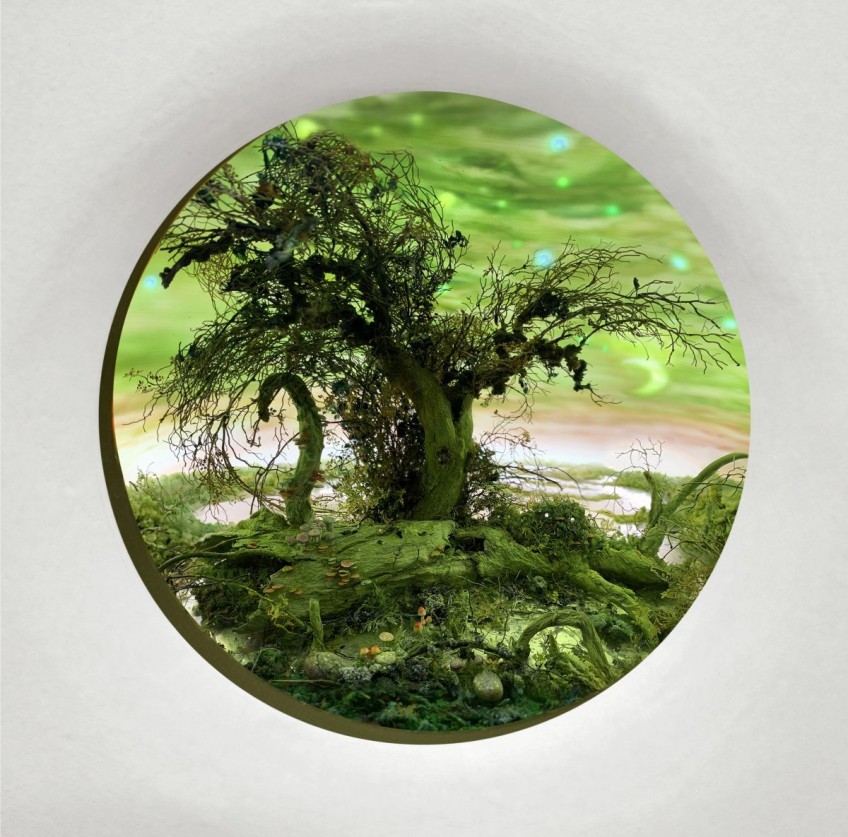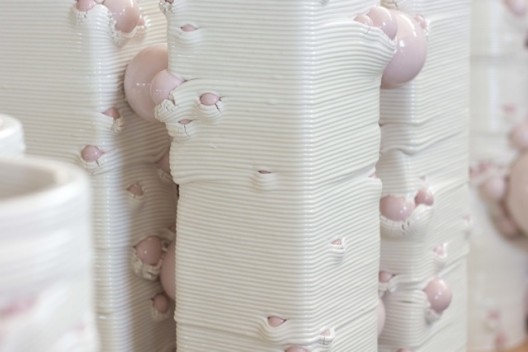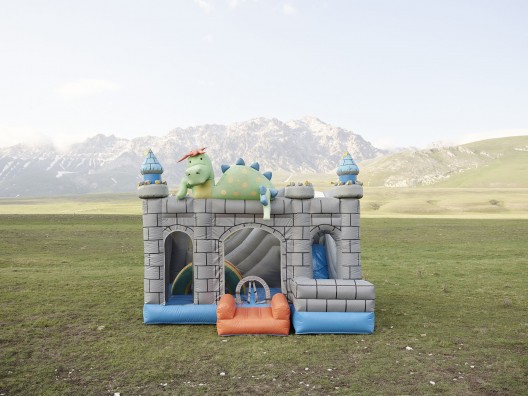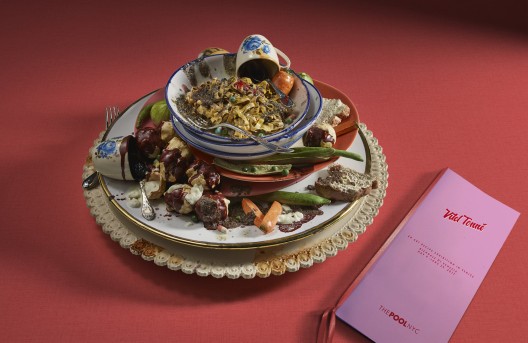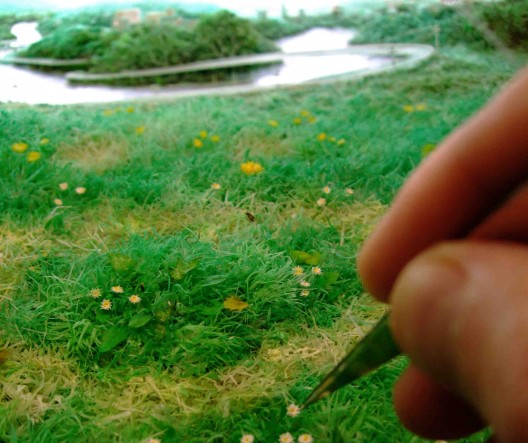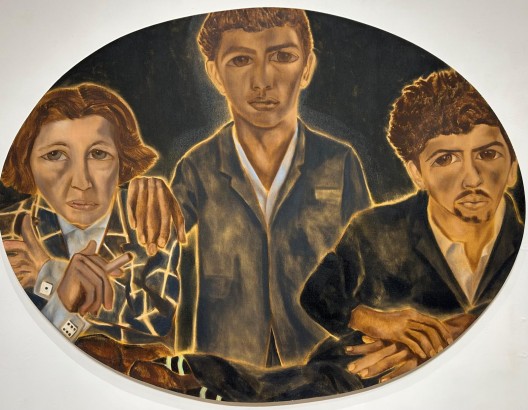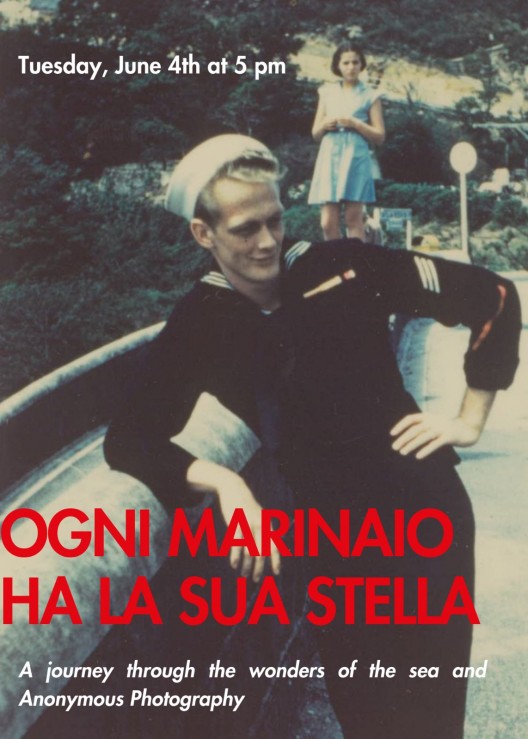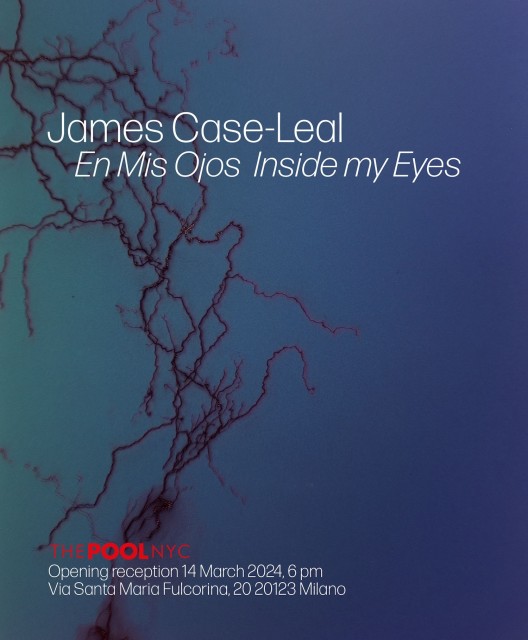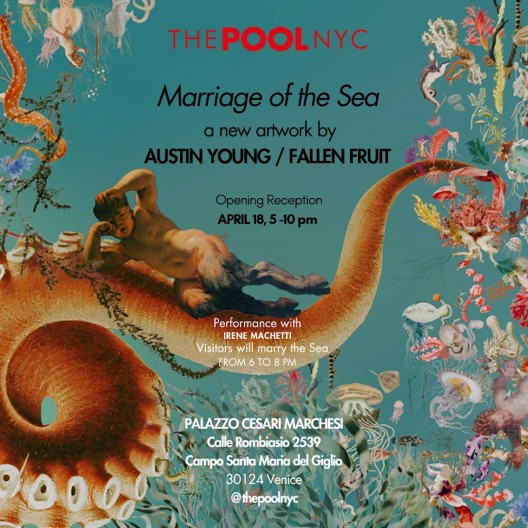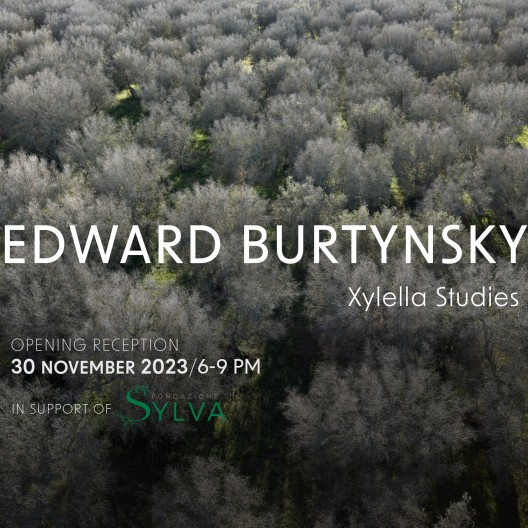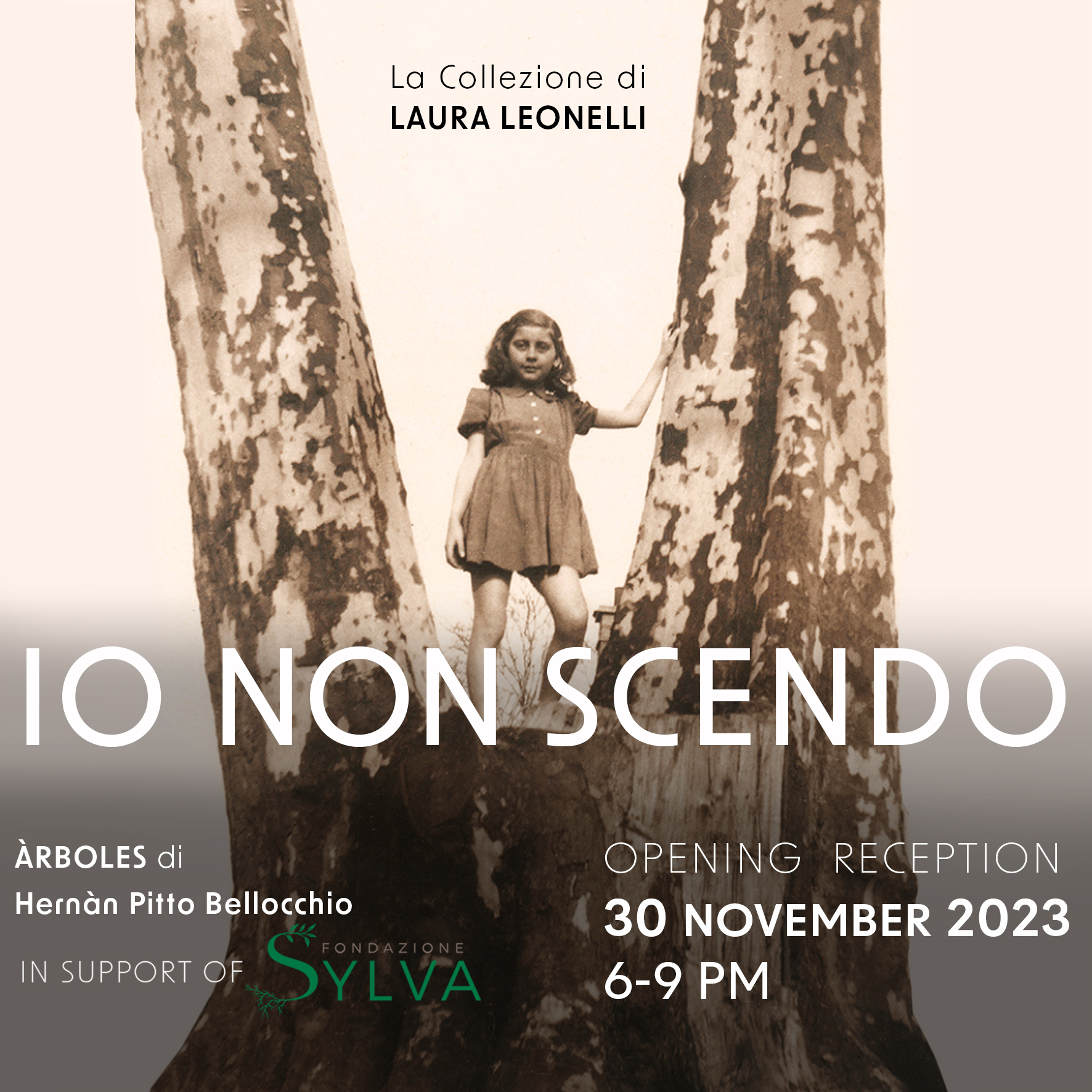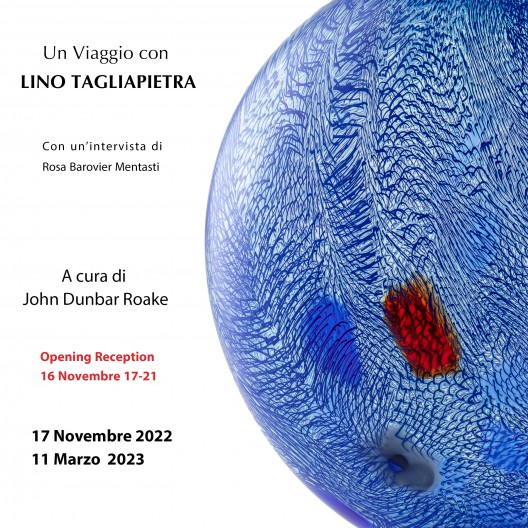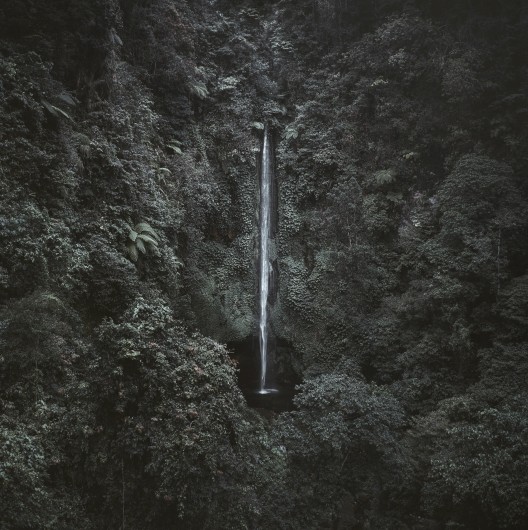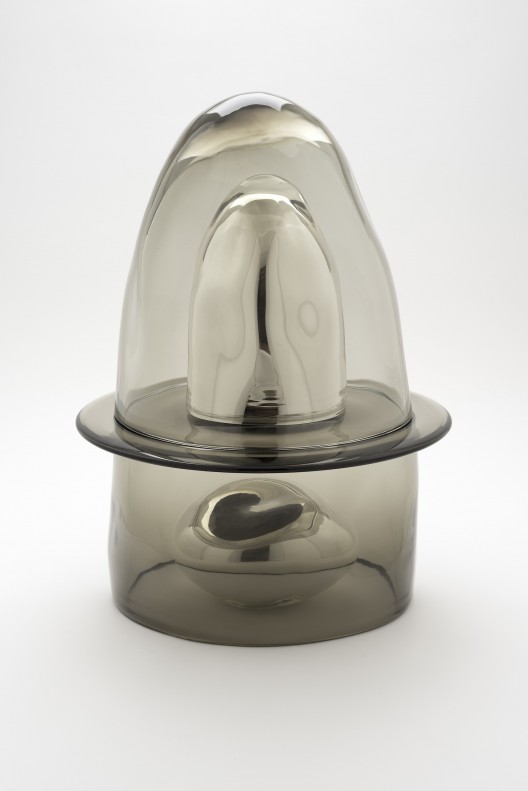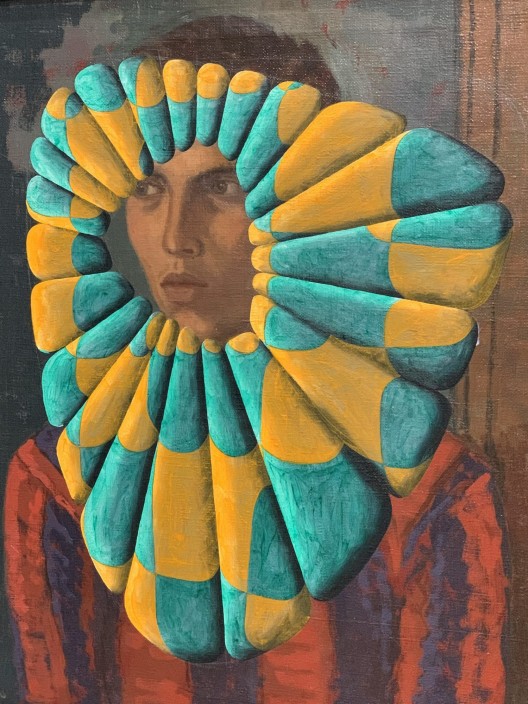On the occasion of the 58th Venice Biennale, THE POOL NYC presents NOTTURNO PIÚ, a group show curated by Giacinto Di Pietrantonio.
There are the ones who see the nocturne in Giotto’s Comet, in San Pietro’s Liberation by Raffaello, in Tintoretto’s work, or even in the Two Men who contemplate the moon by David Caspar Friedrich. Others, in poetry like To the Moon by Giacomo Leopardi, in Whistler’s golden blue color, in the solar stars by Van Gogh, or in futuristic works by Balla and Boccioni. We could go back and forth from dawn to dusk in drawing up the list of artworks whose subject or setting is the night. Certainly, the night was very much courted by the romantics, an era in which the nocturne (nocturne en français) was born. First as a musical work, a form of free, sweet and moderate music that linked up with the serenade. Chopin wrote 21 Nocturnes, Beethoven cheers us with the Moonlight Sonata, even Satie and Debussy did not escape the enterprise. Even literature did not miss the night and the Nocturne as Theodor Amadeus Hoffmann or even Leopardi with the Night Song of a wandering shepherd from Asia. The invitation to the present Notturno Piùexhibit is borrowed from the first cover of the Notturno book, a collection of intimist pizzini written blindfolded because of wounds by the great poet Gabriele D’Annunzio. It is in this evocative frame that we inscribed information and artists’ names for the Notturno Piùexhibition. They are the ones whose work allows returning with the imagination and the memory in the night, in that space time border in which the imagination expands confidentially with the poetics of Mario Airò, Atelier Biagetti, Laura Baldassari, Bertozzi & Casoni, Michel Courtemanche, Mariella Bettineschi, Tomaso Binga, Stefano Cerio, CTRL ZAK, Eteri Chkadua, Jan Fabre, Patrick Jacobs, Ugo La Pietra, Lorenzo Marini, Maria Teresa Meloni, Alessandro Mendini, Aldo Mondino, Francesca Montinaro, Fabio Novembre, Maurizio Orrico, OVO, Paola Pivi, Sarah Revoltella, Jonathan Rider, Andrea Salvatori, Denis Santachiara, Federico Solmi, Giuseppe Stampone, Patrick Tuttofuoco, Vedovamazzei, Alice Visentin.
Ours is not only nocturne, it’s Notturno Più. As night and nocturne are also understood in the form of Blues and Jazz; not only because of the music of the soul, but because of the possibility of jam sessions that offer above all the second. Therefore, it’s an exhibition that is free and mildly moderate, intended as a musical score and set up in a scene writing mode as Carmelo Bene liked to say. A writing – an exhibition in which each artist enters himself and his different work as a composition of a collectively diversified vision with his own unique and complex poetics. The original ones by Mario Airò, the hospitable luxury by Atelier Biagetti, or portraits from the hidden physiognomy of Laura Baldassari‘s lysergic painting, Bertozzi & Casoni’s ceramic realism, the plastic skill of Michel Courtemanche, Mariella Bettineschi’s double feminine gaze, Tomaso Binga’s feminist alphabet, Stefano Cerio’s non-photographic places, the overturned project of CTRL ZAK, the painting testimony of the myths and everyday life of Georgia by Eteri Chkadua, the metamorphic melancholy now blue by Jan Fabre, the meticulous and silent Lilliputian dioramas of Patrick Jacobs, the critical architectural landscape reflections of Ugo La Pietra, the chromatically and futuristically mobile alphabets by Lorenzo Marini, the detailed and ancient portraits by Maria Teresa Meloni, the abstract-futurist signs-decorum by Alessandro Mendini, the illuminating ironic sculptures by Aldo Mondino, the potted plants that hide sculptures of migrant environments by Francesca Montinaro.Fabio Novembre’s tension towards the useless, the abstract-informal paintings by Maurizio Orrico, the precariously hardcover project by OVO, the expansive sign energy of Paola Pivi, the sculptural portraits of the polarized families by Sarah Revoltella, the discrete and almost invisible environmental sculptures by Jonathan Rider, the cosmic vases by Andrea Salvatori, the animated-figured project by Denis Santachiara, the exuberant, noisy and ironic works of Federico Solmi, the responsibly ethical drawings by Giuseppe Stampone, the re-reading of the daily visual codes in the light of the multidisciplinary nature of Patrick Tuttofuoco, the ironic and arrogant landscapes by Vedovamazzei, the playfully shamanic paintings by Alice Visentin.
With this diversity made of 31 artists, the exhibition is an expressive chorus of poetics, techniques, materials that form Notturno Più, where the Più (Plus)is no longer just for the night, but the day and night together, like our life, they can no longer be solitary. This is a group show, an exhibition practice in which you need to be at least in two, the one and the other. Starting a community that counts 31 others, 31 artists with countless works to us, as to them, necessary both day and night to be found in the Notturno Più.
WHERE:
THE POOL NYC at PALAZZO CESARI MARCHESI
Campo Santa Maria del Giglio
Calle Rombiasio 2539 Venezia. Vaporetto Stop: GIGLIO
WHEN:
Opening Reception: Tuesday, May 7th, from 6 to 9 pm
8 May-15 June 2019
Open daily: 11-7
INFO:
+393356251723
+393337891947
thepoolnewyorkcity.com
@thepoolnyc
THE POOL NYC, Palazzo Cesari Marchesi, Calle Rombiasio 2539, Campo Santa Maria del Giglio, Venezia
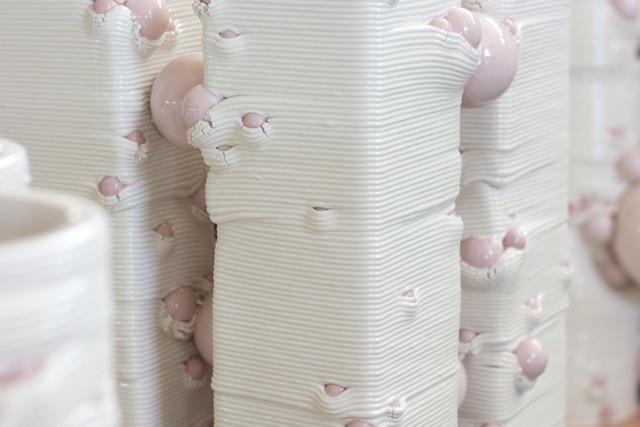
3 April – 31 May 2019
Opening Reception: Tuesday, April 2nd, from 6 to 9 pm
THE POOL NYC presenta Ikebana Rock’n’Roll, la personale del Maestro della Ceramica Contemporanea, Andrea Salvatori, in conversazione con Giulio Turcato, uno dei principali esponenti dell’Astrattismo Informale Italiano.
THE POOL NYCpresenta Ikebana Rock’n’Roll, la personale del Maestro della Ceramica Contemporanea, Andrea Salvatori, in conversazione con Giulio Turcato, uno dei principali esponenti dell’Astrattismo Informale Italiano.
Salvatori plasma da sempre la ceramica, materiale inorganico, assai duttile allo stato naturale e rigido dopo la cottura. Se nel 2009, agli esordi con la galleria, l’artista proponeva lavori in cui associava inserzioni in ceramica a pezzi trovati in mercatini d’antiquariato, adesso, per la prima mostra nella sede milanese, esordisce con una serie di vasi spumosi, carichi di materia, formosi, pieni di ritmo e poesia.
Per Ikebana Rock’n’RollAndrea Salvatori presenta una serie di vasi bianchi con sfere di diversi toni di rosa, inserite come note musicali,a volte più ritmate, altre più calme. Questi lavori sono pensati come Ikebana, dove natura e spirito si fondono nel tentativo di associare la spiritualità orientale con una leggerezza minimale. L’Ikebana utilizza fiori, rami ed altri elementi naturali per realizzare composizioni di grande bellezza.
“La ricerca dell’equilibrio tra tutti gli elementi passa anche dal contenitore. Ci sono numerose scuole di Ikebana e ognuna opta per un arrangiamento particolare. Alcune usano vasi alti e linee verticali, altre invece contenitori poco profondi”. Infatti i lavori dell’artista faentino hanno dimensioni e forme diverse e il vaso abbraccia così il concetto di scultura con una funzione ben precisa.
Per ladisposizione pratica dei fiori si punta all’asimmetria, tratto caratteristico del lavoro di Salvatori, il quale crea con la ceramica un’armonia speciale,Allegro, Grave, Vivace, Moderato,proprio come nelle composizioni musicali. Alcuni lavori sono più tormentati, più pieni, rock, altri più poetici, più vuoti.
Quello tra Andrea Salvatori e la stampa 3D è un confronto inedito, esuberante e al contempo composto, fatto di fugaci imperfezioni e di pause ragionate, che origina da un’innata conflittualità tra creazione umana e artificio tecnico, tra uomo e macchina. La macchina, in questo caso, è la stampante Delta WASP 40100 Clay, progettata da WASP per essere al fianco dei ceramisti durante tutto il processo artistico, ripensando radicalmente l’ideazione dell’opera grazie alle innovative opportunità offerte dalla fabbricazione digitale.
La stampa 3D è il simbolo di una nuova corrente artistica, frutto di repertori digitali unici e tuttora non sondati dall’arte contemporanea. La collaborazione tra WASP e il Maestro si prefigge di delineare inediti scenari artistici, in cui routine meccaniche e gestualità scultoree coesistono nel dialogo compositivo dell’opera. Salvatori concepisce questo rapporto con un’intuizione estremamente affascinante: manomettere la perfezione della stampa con una miscellanea di inserzioni ceramiche. Il processo di deposizione del materiale e di incastonatura delle sfere è tema centrale nella collezione Ikebana Rock’n’Roll, al punto da convincere Salvatori a denominare le opere “Composizione 40100”, come scaturite da un dialogo musicale dalle tonalità più svariate.
L’artista sconvolge l’algoritmo reiterato pedissequamente dalla macchina con accenti musicali imperfetti, frutto di volta in volta di azioni spontanee e processi ragionati.
Sorge naturale associare le sculture di Salvatori ai dipinti di Turcato: due sperimentatori in fatto di materia.
Giulio Turcato, una presenza costante a La Biennale di Venezia, ha indagato per tutta la vita la materia, usando fluorescenze, pastiglie, sabbie, acrilico e olio.
Nel 1947 Turcato è tra i firmatari di FORMA 1, dove esprime un interesse per una pittura formalista. Nel 1956, dopo un viaggio in Cina, forti sono i riferimenti agli ideogrammi, da cui la nascita dei cosiddetti Reticoli, un trionfo di forme attraverso il colore, che assume una valenza astratta in relazione proprio con se stesso. Col passare degli anni l’artista tende all’assenza della forma.
Agli inizi degli anni ’60 Giulio Turcato viene colpito dalle nevrosi contemporanee e inserisce nei suoi lavori i Tranquillanti, giocando con la materia pittorica e dando vita a composizioni brillanti, astratte, tutte con un piglio musicale. Negli anni delle conquiste spaziali il Maestro inventa opere con sabbie colorate cangianti affermando “la mia ricerca coloristica è orientata verso un nuovo colore…”. È del 1964 la prima Superficie Lunare, realizzata con una striscia di gommapiuma lavorata e combusta. Sarebbe soddisfatto di vedere oggi i toni che hanno assunto i colori da lui medesimo creati.
Nei lavori dell’artista nato a Mantova e mancato a Roma c’è un acceso ritmo informale generato dalla diversità dei materiali usati nelle fasi della sua produzione. THE POOL NYC propone una selezione di opere che spazia dai Reticoli, alle Superfici Lunari, ai Tranquillanti,fino agli Arcipelaghi.
Ikebana e Rock’n’Roll sono in totale contrasto: il primo legato alla spiritualità, il secondo al ritmo di vita terreno e festaiolo. Tutto quanto esiste in natura può essere trasformato in materiale compositivo, purché interpretato nella sua essenza di elemento naturale, riordinato e riespresso e, da inerte, reso vivente. All’origine è dunque la natura, fonte inesauribile di materia prima, modello perfetto che l’uomo può imitare e che l’artista non deve contraffare. Non dimentichiamo che la natura non ripete mai identica una stessa forma, pur moltiplicandola in una quantità potenzialmente infinita.
THE POOL NYC presents Ikebana Rock’n’Roll, the solo show by the Master of Contemporary Ceramics, Andrea Salvatori, in conversation with Giulio Turcato, one of the main exponents of Italian Informal Abstractism.
Salvatori has always molded ceramics, an inorganic material that is very ductile in its natural state and rigid after cooking. Since his debut with the gallery in 2009, where the artist proposed works in which he associated ceramic inserts to pieces found in antique markets, till this first exhibition in the Milanese Gallery, he shows a series of foamy vases, full of matter, curvy, loaded with rhythm and poetry.
For Ikebana Rock’n’RollAndrea Salvatori presents a series of white vases with spheres of different shades of pink, inserted as musical notes, sometimes more rhythmic, sometimes more calm. These works are conceived as Ikebana, where nature and spirit merge in an attempt to associate Oriental spirituality with minimal lightness. Ikebana uses flowers, branches and other natural elements to create compositions of great beauty.
“The search for balance between all the elements also passes through the container. There are numerous schools of Ikebana and each one opts for a particular arrangement. Some use tall vases and vertical lines, others use shallow containers.” In fact the works of the artist from Faenza have different dimensions and shapes and the vase thus embraces the concept of sculpture with a very specific function.
For the practical arrangement of the flowers, the aim is asymmetry, a characteristic trait of Salvatori’s work, which creates a special harmony with ceramics: Allegro, Grave, Vivace, Moderato, just like in musical compositions. Some works are more tormented, fuller, rock, others more poetic, empty.
The one between Andrea Salvatori and 3D printing is a new and exuberant confrontation, made of fleeting imperfections and reasoned pauses, which originates from an innate conflict between human creation and technical artifice, between man and machine. The machine, in this case, is the Delta WASP 40100 Clay printer, designed by WASP to be at the side of the ceramists throughout the artistic process, radically rethinking the conception of the work thanks to the innovative opportunities offered by digital fabrication.
3D printing is the symbol of a new artistic current, the result of unique digital repertoires and still not probed by contemporary art. The collaboration between WASP and the Maestro aims to outline new artistic scenarios, in which mechanical routines and sculptural gestures coexist in the compositional dialogue of the work. Salvatori conceives this relationship with an extremely fascinating intuition: to tamper with the perfection of printing with a miscellany of ceramic insertions. The process of depositing the material and setting the spheres is a central theme in the Ikebana Rock’n’Roll collection, to the point of convincing Salvatori to name the works “Composition 40100”, as if they originated from a musical dialogue of the most varied tones.
The artist alters the repeated algorithm with imperfect musical accents, as a result of spontaneous actions and reasoned processes.The first Lunar Surface dates to 1964 with a strip of processed and burnt foam rubber. He would be pleased to see today that tones have taken on the colors he created himself.
Stefano Cerio, Aquila.
Con Saluti dall’Abruzzo di
Giuseppe Stampone
SABATO 23 MARZO DALLE 17 in galleria
An Art Recipe Exhibition in Venice
THE POOL NYC at Palazzo Cesari-Marchesi
Calle Rombiasio 2539,
Campo Santa Maria del Giglio, Venezia
MAY 9-JUNE 25 2017
Vitel Tonné is a Piedmontese dish of cold, sliced veal covered with a creamy, mayonnaise-like sauce that has been flavored with tuna; it is also known as “the main course of an Italian meal or as an exceedingly elegant antipasto for an elaborate dinner”, Marcella Hazan, the famous authority on Italian cuisine, states.
Veal + tuna + mayonnaise, separately strong ingredients, with solid flavour, compose a great dish. According to canonical parameters on cooking, Vitel tonné should not exist, Fish + Meat = Forbidden! And if it did not, Italian cuisine would be sorely lacking.
But, there is always an exception, and it’s the peculiar nature that gives birth to a genius dish.
This culinary introduction, might sound like an odd premise for an art show, but it is only too appropriate for the organic exhibition that THE POOL NYC is presenting for this 2017 Venice Biennale at Palazzo Cesari-Marchesi.
We are proud to serve a selection of junk media and free range artists, very spicy and from various countries, all belonging to the same kitchen of ART.
Art, as we see it, is the Grande Cucina with many chefs, all with their own unique sense of personality, humor, fantasy, intelligence, sensitivity.
There is a common denominator that let arts stick together, even being from different centuries and origins, as it happens in magical recipes.
THE POOL NYC is happy to marinate, in the rooms of an old Venetian Palace of the XVIII century, a wide selection of Modern and Contemporary artworks for a digestible show.
Walking through the salons of the palazzo will entertain your eyes, will stimulate your spirit, and will nourish your cultural avidity. Every room is filled with a specific medium in order to satiate your need of ceramic, figurative painting, or photography without additives. Your artistic hunger will be satisfied by slicing every single work of art installed within the Palazzo.
The Menu is rich of interesting dishes, made of contemporary dairy free ceramic, organic paintings of the XX and XXI Century served in an old building.
This explosive dressing will regenerate your stomach. It will be a shake of artworks, to savor all together, or each separately. You can start with a vegan antipasto of photography and end with a glazed ceramic dessert.
The main salon, garnished with stuccos, hosts a convivial long table, where the whole art family, will peacefully dine, exchanging opinions despite their different nature.
In Italy we experience the Cuisine not just as a survival or Epicurean moment, but as a situation where we get together. We don’t care about nationality, dairy products, color, vegetarianism, taste, Extra Virgin Olive Oil, size, veganism, age, medium, political views, feminism, spacialism, abstract art, pop-art, we can live together and devour it all.
This is a gluttonous experience, and we are pleased to share it with you.
Il Vitel Tonné è un piatto tipico piemontese realizzato con il girello di vitello e la salsa tonnata. Si può guarnire con capperi e limone.
Vitello, tonno e maionese, ognuno con un sapore forte, danno vita a una ricetta favolosa.
Seguendo i canonici parametri della buona Cucina, il Vitel Tonné non dovrebbe esistere perché Carne + Pesce = Divieto Assoluto! Ma ecco l’eccezione che conferma la regola.
Questa introduzione culinaria potrebbe apparire bizzarra per una mostra d’arte, ma è assolutamente adatta per la organic exhibition che THE POOL NYC presenta a Palazzo Cesari-Marchesi in occasione della 57esima edizione de La Biennale di Venezia.
Acquolina in bocca per i più avidi collezionisti. Si tratta di una mostra ghiotta: vetri, ceramica, pittura, astratta e figurativa, video, installazioni, fotografia, disegni, acquerelli, diorami; una visione dell’arte come esperienza golosa, adatta a palati sopraffini.
Siamo orgogliosi di servirvi una selezione di junk media e artisti liberi, assai speziati e di varia provenienza, tutti però appartenenti alla stessa Cucina dell’Arte.
L’arte, per come la intendiamo, è la Grande Cucina con tanti cuochi, ognuno con la propria personalità, humor, fantasia, intelligenza e sensibilità.
Un comune denominatore fa sì che le arti, sebbene di secoli e luoghi diversi, ben convivano, proprio come nelle migliori ricette di cucina.
Nelle stanze di un antico palazzo veneziano del XVIII secolo, THE POOL NYC è felice di marinare un’ampia selezione di lavori di Arte Moderna e Contemporanea per una mostra davvero sfiziosa.
Camminare all’interno dei saloni del palazzo attrarrà i vostri occhi, stimolerà lo spirito e nutrirà la vostra avidità culturale. Ogni stanza è farcita d’arte per saziare il vostro bisogno di installazioni multimediali, di pittura figurativa, o di diorami senza conservanti.
Questo menu esplosivo vi rigenererà. Potrete cominciare con un antipasto di fotografia e finire con una spuma di ceramica invetriata.
La sala principale, guarnita con stucchi, ospita un banchetto dove l’intera famiglia dell’arte mangerà insieme, scambiando convivialmente opinioni.
In Italia siamo abituati a mangiare non tanto per sopravvivere o per il piacere del palato, ma soprattutto per stare insieme, come atto simposiaco. Non importa la nazionalità dei partecipanti, la loro età, il colore, l’appartenenza a una corrente artistica, che siano vegetariani, figurativi, o biodinamici; non discriminiamo nessuno per le visioni politiche o i media utilizzati; siamo aperti al Femminismo, allo Spazialismo, all’Astrattismo, alla Pop-Art; usiamo Olio Extra Vergine d’Oliva e acrilico; ci ritroviamo tutti insieme allegramente e divoriamo tutto quel che ci viene proposto.
Preparatevi a un’esperienza golosa, che noi siamo felici di condividere con voi.
Artists:
Ercole Barovier, Gina Beavers, Bertozzi & Casoni, Giacomo Cappellin, James Case-Leal, Eteri Chkadua, Marcel Dzama, Giorgio Ferro, Stefania Fersini, Piero Fogliati, Luigi Ghirri, Piero Gilardi, Giorgio Griffa, Riccardo Guarneri, Patrick Jacobs, Austin Lee, Sol LeWitt, Aldo Mondino, Niccolò Montesi, MVM, Luigi Ontani, Jonathan Rider, Andrea Salvatori, Antonio Scaccabarozzi, Carlo Scarpa, Peter Schuyff, Archimede Seguso, Bianca Sforni, Federico Solmi, Giuseppe Stampone, Fratelli Toso, Giulio Turcato, Ludwig Wilding.
Address:
Calle Rombiasio, Campo Santa Maria del Giglio, 30124 Venezia.
How to find us:
Once in Campo Santa Maria del Giglio, walk opposite to Canal Grande, pass the church of Santa Maria del Giglio on the left and Tessitura Bevilacqua on the right, following THE POOL NYC stickers.
Vaporetto stop: S. Maria del Giglio (same stop of the Gritti Palace)
Water access: Rio de l’Alboro (aka Rio de le Ostreghe)
Hours of Operation: daily 11 am – 7 pm and by appointment
Vernissage and Opening Reception: 9th May 2017 at 6 pm.
#thepoolnyc
#viteltonnevenezia
A special Thanks to Scaramouche NY for their collaboration
A Solo Show in NYC
Patrick Jacobs intentionally blurs boundaries between the traditional artistic media of painting, sculpture and photography in his works. At the same time, they present the viewer with a spatial and perceptual conundrum; we are drawn into a space at once determinate and infinite, natural and contrived, prosaic and otherworldly.
Jacobs draws inspiration from sources as diverse as historical landscape painting and contemporary chemical companies home and garden pest control brochures, such as Chevons Ortho Books. Recalling the Claude glass, an optical device popular in the 18th century used to frame the picturesque, the lenses invoke the invisible eye of the wary homeowner searching an otherwise vacant domestic landscape for imagined interlopers. Ortho, Greek for correct, further alludes to the unending quest to control any divergence from the norm, as well as the manipulation of our sense of perspective. With such a fusion of influences, these quiet compositions offer a magical view of the mundane. Here, reality has been de-familiarized, and the uncanny has supplanted the commonplace.
Each work consists of a meticulously constructed, three-dimensional diorama installed within the wall and viewed through a circular window of glass lenses. The combination of the negative focal length of the lenses and sculptural foreshortening creates the illusion of seemingly infinite depth within the limitations of a narrow space. The result is a distorted reality corrected only when seen through the lenses. Though artificial, these worlds are nevertheless strangely real and tactile.
Whereas painters using the Claude glass sought highly picturesque moments, Jacobs dioramas tend to depict banal and subtle scenes, places often overlooked, such as a field with an anthill or the view out a window over a radiator. This exhibition will include four works from Jacobs interior series. In each, an imaginitive birds eye view of the Gowanus Heights from the artists apartment in Brooklyn, NY produces a spatial progression from interior to exterior as well as the impossible effect of simultaneous close-up and distance.
Jacobs draws inspiration from sources as diverse as historical landscape painting and contemporary chemical companies home and garden pest control brochures, such as Chevons Ortho Books. Recalling the Claude glass, an optical device popular in the 18th century used to frame the picturesque, the lenses invoke the invisible eye of the wary homeowner searching an otherwise vacant domestic landscape for imagined interlopers. Ortho, Greek for correct, further alludes to the unending quest to control any divergence from the norm, as well as the manipulation of our sense of perspective. With such a fusion of influences, these quiet compositions offer a magical view of the mundane. Here, reality has been de-familiarized, and the uncanny has supplanted the commonplace.
Each work consists of a meticulously constructed, three-dimensional diorama installed within the wall and viewed through a circular window of glass lenses. The combination of the negative focal length of the lenses and sculptural foreshortening creates the illusion of seemingly infinite depth within the limitations of a narrow space. The result is a distorted reality corrected only when seen through the lenses. Though artificial, these worlds are nevertheless strangely real and tactile.
Whereas painters using the Claude glass sought highly picturesque moments, Jacobs dioramas tend to depict banal and subtle scenes, places often overlooked, such as a field with an anthill or the view out a window over a radiator. This exhibition will include four works from Jacobs interior series. In each, an imaginitive birds eye view of the Gowanus Heights from the artists apartment in Brooklyn, NY produces a spatial progression from interior to exterior as well as the impossible effect of simultaneous close-up and distance.
THE POOL NYC is thrilled to present CLEMENTE-HALLEY-SCHNABEL, an exhibition that brings together three crucial figures of our times. The three artists were born within a year of each other and grew professionally in New York. Similar, different, distant and very close, they are undoubtedly among the major artists of the Contemporary Art Scene. We are very proud to present a series of works from 1986 to 2010.
New York is dangerous, subversive, misleading, erotic, very dirty, chaotic and extremely artistic. There is a smell of marijuana already on Houston Street, and it increases the further east you go. SoHo, NoHo, ABC, the Lower East Side are areas to avoid, because robberies, crime, weapons and drugs are the backdrop. Precisely at the stroke of the roaring 80s, with the aforementioned milieu, three artists who have little in common, both in terms of education and origin, breathe the contagious energy of what is the only true City in the Western world. I Love NY, but NY doesn’t love you goes a New York saying; and that’s right, everything you do happens because you earned it. There has always been a desire for art in the air, a desire for painting and colour, exuberance. Enough Minimal, enough Conceptual Art: let the figures, strong lines and bright colors return.
FRANCESCO CLEMENTE (Naples, 1952) is one of the protagonists of the Transavanguardia Movement. He lives and works between New York and India. His works are always connected to a travel itinerary, they refer to the cultural traditions of the country visited, they bring back the voices of distant lands, they are intertwined with the personal biography of the artist, feeding on the passions, desires and emotions that animate him.
In constant balance between a narrative and an imaginative dimension, he places the human figure at the center of his interests. The body as a border line that divides the inside from the outside becomes a tool for deepening oneself and for understanding the reality that surrounds it. Often the artist appears with eyes enlarged beyond measure or his body is subject to distortions and deformations. It is a way to observe oneself and others from different, unusual perspectives, a sort of documentation of the self whose continuous repetition does not define fragmentation or dispersion, but always represents a new rebirth.
In 1980 he moved to New York, where he collaborated with poets such as Allen Ginsberg and Robert Creeley, and with artists such as Jean-Michel Basquiat and Andy Warhol. Together with Raymond Foye he established the publishing company Hanuman Books, also becoming a member of the American Academy of Arts and Letters.
His works are exhibited in many prestigious museum collections around the world, including the Art Institute of Chicago, the Tate Gallery in London, the Kunstmuseum in Basel, the Solomon R. Guggenheim Museum in Bilbao and New York, the Metropolitan Museum of Art in New York and the Museum of Modern Art in New York.
PETER HALLEY (New York, 1953) graduated from Yale University, received his PhD from the University of New Orleans in 1978; lives and works in New York.
Peter Halley’s artistic research moves in the field of geometric abstraction and in his paintings square and rectangular shapes, defined by the artist as ‘cells’ or ‘prisons’, relate to each other through square-section ducts, representing the growing geometrization of the social space of the contemporary electronic technological world and inviting us to reflect on the effects of psychological pressure produced on human life. The minimalist geometry recalls electronic circuit boards and the intense and brilliant colors used – obtained thanks to the use of Day-Glo colors – refer to the waves of luminous flows produced by technological society. Peter Halley fits culturally into the process of evolution of abstract language starting from Cézanne, passing through Malevich, Mondrian, Albers and American minimalism – among which, first of all, Stella – also dialoguing with different languages, such as abstract expressionism.
Peter Halley has exhibited in the most important international galleries and museum institutions including: the Museum of Modern Art in New York, the CAPC Musée d’Art Contemporain in Bordeaux, the Museo Nacional Centro de Arte Reina Sofia in Madrid, the Stedelijk Museum in Amsterdam , the Dallas Museum of Art, the Folkwang Museum in Essen and the Butler Institute of American Art. Despite his success, Halley’s rigorous conceptualism has historically been better received in Europe. Halley has written and published texts on art and culture, addressing the themes of structuralism, post-modernism, and the digital revolution of the 1980s. In 2001, he received the Frank Jewett Mather Award from the College Art Association in the United States for his critical writing. He has taught at Columbia University, the University of California at Los Angeles and the School of Visual Arts. Hey was director of Graduate Studies in painting and printmaking at Yale University School of Art (2002-2011).
JULIAN SCHNABEL (Brooklyn, NY, 1951), lives and works in New York.
A graduate of the University of Houston, Julian had his first exhibition in 1979 at Mary Boone Gallery in New York. From that moment on it was a succession of successes, so much so that his works, from sculpture to painting, are exhibited in museums and collections all over the world, from the MOMA in New York to the Guggenheim in Bilbao, becoming a leading exponent of neo-expressionism.
Painter, sculptor and director, Julian Schnabel stands out for his astonishing metamorphic ability and the overwhelming expressive force that he communicates through his works. A talent born from painting that led him to explore more artistic fields and to try his hand at the world of cinema where he succeeded as an excellent director with the films Basquiat in 1996, or The Diving Bell and the Butterfly in 2007 (winner of the award for best director at the Cannes). Schnabel’s cinematographic production is closely related to his artistic production to the point that his films can be considered a natural continuation of his pictorial vein.
A journey through the wonders of the sea and
Anonymous Photography
Either one is a sailor or one is not
Joseph Conrad
THE POOL NYC presents a new chapter in its original exploration of Anonymous Photography and its masterpieces. On the occasion of Men’s Fashion Week, the gallery pays homage to the allure of sailors and their unparalleled, timeless elegance. In an installation of ninety anonymous photographs, from mid-19th century France to 1920s Italy, from New Deal America to 1950s Soviet Union, the exhibition tells the story of the eternal seduction of a male myth and the oceanic element in which it was born.
Virile yet graceful in poses that adapt to the flow of the waves, sparkling and smiling in uniforms that continue to inspire both men’s and women’s wardrobes, sailors used photography to freeze time and erase any distance. From the Atlantic to the Baltic Sea, from the Mediterranean to the Pacific, and up to the Black Sea, sailors have always photographed themselves everywhere: inseparable among buddies, during manoeuvres and chores, on the ship’s deck building muscles, on leave, just married outside the church, next to the statue of Garibaldi in a photo studio, and in the cabin of a photo booth just before sailing.
In a century of images and great horizons, from 1860 to 1960, this exhibition invites us to become sailors too, to wear the uniform of freedom and adventure, and to set off. After all, as Mark Twain said: “Twenty years from now you will be more disappointed by the things that you didn’t do than by the ones you did do. So throw off the bowlines. Sail away from the safe harbor. Explore. Dream. Discover.”
The exhibition features a second installation themed around the scientific and artistic exploration of the starfish. From the archives of the famous Station Biologique de Roscoff in Brittany, founded in 1872 and dedicated to exploring marine species, these anonymous images form an original corpus created in the early 1950s.
The enchantment lies not only in the beauty of the subject but also in the quality of the photographs, which bring us back to the extraordinary experience of Jean Painlevé (1902-1989), biologist, filmmaker, friend of Jean Vigo, Jacques-André Boiffard, and André Breton, and researcher at the Station Biologique de Roscoff. It was in Roscoff between the 1920s and 1930s that Painlevé created his famous photographic and cinematic recordings of starfish, octopuses, seahorses, shrimps, and sea urchins. An unexplored world, whose dreamlike and sensual power the Surrealists intuited, and it is no coincidence that Man Ray asked Painlevé for an excerpt of his recordings to include in the famous film L’étoile de mer (The Starfish) of 1928. A world, still, that comes back to us in an unpublished, hypnotic, and precious collection.
JUNE 4 -SEPTEMBER 29, 2024
THE POOL NYC is pleased to present Inside my Eyes, a solo exhibition dedicated to the latest and the more iconic works of the American artist James Case-Leal.
In the upcoming exhibition, the artist investigates the intriguing phenomenon of afterimages: the visual distortions experienced after intense stimuli. Staring at the sun or lightning illuminating the night sky, their flashes linger in one’s vision as a result of the exhaustion of our optical nerves from excessive stimulation. The artist breaks away from traditional painting techniques, using numerous layers of spray on linen canvases stretched on wood.
‘My entire nervous system has been overstimulated for as long as I can remember. Constant fear, anxiety, worry, even optimism have kept my nerves in a state of hyper-vigilance. I wonder if my nervous system is susceptible to the same kind of exhaustion as in my eyes. It feels like it. And if the nerves throughout my body are shutting down, I wonder how that’s distorting the way I see the world.’
James Case-Leal challenges conventional boundaries, inviting viewers into a world where reality and abstraction intertwine to evoke a sense of wonder and introspection. Through his unique perspective and ability to capture the essence of the human experience, Case-Leal’s recent artworks reveal intense introspection and a deep connection to the nature of perception itself.
These paintings relate to perception. And the unsettling awareness that everything I’ve ever seen happened inside my eyes.
|
|
|
|
La grave situazione ambientale in cui versa la Terra è ormai nota a tutti.
Sorge dunque spontaneo domandarsi cosa possa fare l’uomo per limitare i danni derivati dal cambiamento climatico da lui provocato.
Già nel 1909 Marinetti auspica e canta l’amor del pericolo, l’abitudine all’energia e alla temerità. La vita contemporanea ha infatti sedotto l’uomo con la velocità, l’industria e il profitto, tralasciando radici e obiettivi fondamentali alla sopravvivenza del genere umano.
Dal sentimento prima eroico, in cui l’uomo si emancipa da una natura dominante, si è giunti ad uno sfruttamento scellerato, a puro scopo di lucro, delle risorse naturali.
L’idea romantica che i tesori della terra fossero infiniti si è rivelata infondata.
Da qui i forti disastri: l’inquinamento atmosferico, la crescita delle temperature medie, i cataclismi e la comparsa di parassiti infestanti come la xylella fastidiosa, a cui viene dedicato un approfondimento specifico nella mostra Xylella Studies di Edward Burtynsky nella sede milanese di THE POOL NYC.
L’essere umano deve ripensare il proprio rapporto con la natura, non c’è più tempo.
Proprio per questo THE POOL NYC ha deciso di supportare Fondazione Sylva, che si occupa di rigenerazione ambientale attraverso la riforestazione.
Le prime due sale della galleria ospitano il lavoro commissionato da Fondazione Sylva all’artista canadese Edward Burtynsky, celebre in tutto il mondo per il suo impegno civile nella testimonianza dell’impatto dell’uomo sul pianeta. Le fotografie raccontano il disastro avvenuto in Puglia, dove oltre ventuno milioni di olivi sono stati contagiati dall’aggressivo batterio.
Nella Sagrestia della galleria viene presentata la straordinaria Collezione di fotografia anonima di Laura Leonelli dedicata alle donne sugli alberi, raccolte nel libro “Io non scendo”: un lavoro che apre scenari estremamente interessanti su cosa abbiano significato le piante anche per l’indipendenza femminile.
Per completare la ricerca green, THE POOL NYC propone il lavoro dell’artista cileno Hernàn Pitto Bellocchio, che interpreta a china i luoghi del potere sudamericano sottratti agli abitanti e a Madre Natura.
Edward Burtynsky è tra i fotografi più conosciuti a livello internazionale. L’artista canadese ha dedicato quaranta anni della sua carriera alla testimonianza dell’impatto che l’industrializzazione ha avuto sul nostro pianeta. Il suo lavoro si trova nelle collezioni di oltre sessanta musei tra i più importanti al mondo.
Laura Leonelli, giornalista, collabora al supplemento culturale de Il Sole 24 Ore, Arte e AD. È curatrice della Collezione Ettore Molinario. Ha pubblicato i volumi Siberia per due. Madre e figlia lungo lo Enisej (Feltrinelli), Lem. Viaggio iniziatico di un piccolo Buddha (Contrasto), Paolo Ventura. Autobiografia di un impostore (Johan & Levi), Rosalia Rabinovich. Stella Rossa (Biffi Arte), Bruno Corali. Il volo della gazzella (Lubrina), È Nestlè. Un viaggio all’origine di tanti sapori italiani (Peliti Associati), Un anno Pedrini (Peliti Associati). Da tempo studia e colleziona fotografia anonima.
Hernán Pitto Bellocchio, artista cileno, vive e lavora tra Milano e Buenos Aires. Esplora diverse tecniche come la fotografia, la pittura, il disegno e le installazioni site-specific. La sua ricerca si focalizza su temi socialmente critici, dove trova le connessioni che esistono tra i sistemi artificiali delle città, l’anatomia umana e il mondo delle piante.
Fondazione Sylva è un ente no-profit che si occupa di rigenerazione territoriale principalmente attraverso la riforestazione e la rinaturalizzazione in aree abbandonate o marginali. Promuove attività di educazione e sensibilizzazione nelle scuole; mobilita il mondo dell’arte e della cultura sui temi ambientali.
Opening Reception:
Giovedì 30 Novembre 2023 dalle 18 alle 21
Ore 19.15 Talk con Luigi de Vecchi, Laura Leonelli ed Alessandra Viola
Date:
Primo Dicembre 2023 – 2 Marzo 2024
Aperto da Martedí a Sabato 11-13/15-19
Fondazione Sylva
Piazza Castello dei Trane, 1
73039 Tutino, Comune di Tricase (LE)
info@fondazionesylva.com
ARE YOU AN ICON, TOO?
Curated by Luigi Franchin and Viola Romoli
Claudio Abate, Berenice Abbott, Nobuyoshi Araki, Peter Beard, Bill Brandt, Henri Cartier-Bresson, Gregory Crewdson, Mario De Biasi, Robert Doisneau, Alfred Eisenstadt, Elliott Erwitt, Ron Galella, Luigi Ghirri,
Mario Giacomelli, Gianfranco Gorgoni, Jacques-Henri Lartigue, Yousuf Karsh, André Kertész, Alberto Korda, Richard Misrach, Vik Muniz, Tazio Secchiaroli, Elio Sorci, Wolfgang Tillmans, Oliviero Toscani, Inez Van Lamsweerde & Vinoodh Matadin, Minor White, Joel-Peter Witkin
12 MAY-30 SEPTEMBER 2023
Every single day we are bombarded more and more by images of famous and anonymous human beings, in public and private spheres and we should wonder if we ourselves have become iconic for someone, or we could be if photographed in a certain way.
Drooping eyes, half-open lips, fetish feet, crossed legs, talking hands: we could become an icon, but how can we really be one?
In the 21st Century, the tuna tataki with sliced avocado by a well-known chef steals space from the faces of great philosophers or thinkers, why?
We must ask ourselves this question before visiting the exhibition and find the answer after carefully observing the photographs of the great masters, who did not use their mobile phones compulsively immortalizing any image, but looked through an uncertain lens and captured something unique in a single instant and unrepeatable.
The Icon was born as a sacred image painted on wood or tablet which is subsequently embellished with gold, silver or precious stones, therefore something unique; we pass in the blink of an eye from the sacred to the profane with the advent of information technology: the icon becomes a small image that symbolically represents a command, a function or even a document or an operating program, which appears on the screen of a computer.
Just about 30 masters of photo-art, selected from the ones exhibited in Milan through the course of the last 40 years. They are all displayed from the 12th of May to the 9th of September at THE POOL NYC in via Santa Maria Fulcorina in Milan. From Jacques-Henri Lartigue to Gregory Crewdson, these pioneers of the art of photography tell us a story of the Twentieth Century. As a matter of fact the oldest picture in the show is a Lartigue dated 1912 and a Crewdson dated 1999 puts the word “end” to the last Century. Each of the photographers are represented by photo – icons which made a great impact in the visions of our modern social history.
Images which influenced new generations through the years, thus participating to a unique moment in history, “the triumph of photography in the new millenium”.
Some of the artists are very popular personalities such as Via Muniz, Nobuyoshi Araki, Oliviero Toscani, Henri Cartier – Bresson and, among others, the milanese photojournalist Mario De Biasi. Do not miss the opportunity to look at an original print of the Kiss at the Hotel de Ville by Doisneau or the famous portrait of Che Guevara by Korda and Brigitte Bardot on a WC in Cinecittà by Secchiaroli. More over two diptychs by the most relevant Italian photo-artists: Mario Giacomelli and Luigi Ghirri. Some of the works open up to experimental artistic methods such as the deadly reconstructions by Joel-Peter Witkin or some ambiguous digital manipulations by Inez Van Lamsweerde. Their camera is used to depict the thin border between theatre and reality, disavowing the conformism of a classic world. The exhibit opens a particular focus on some of the most popular genres when collecting modern photography: the obsessive research for the uniqueness of vintage materials with rare works by Mario Giacomelli, the constructed photographic metaphors with early pieces by Via Muniz and the relationship between art and documentation with a series of works by Claudio Abate recently passed away after living in close contact with artists such as De Chirico and Kounellis.
A Journey with LINO TAGLIAPIETRA
Curated by John Dunbar Roake
With an Interview by Rosa Barovier Mentasti
THE POOL NYC is proud to present A Journey with LINO TAGLIAPIETRA, a solo exhibition dedicated to Lino Tagliapietra, the most important contemporary glass artist in the world today.
Lino occupies a leading position amongst great artists, professors, and mentors with pieces in international museums, important collections as a testament to his importance.
The gallery, which has been dealing with Venetian glass for many years, wants to highlight the importance of Lino Tagliapietra in the contemporary art scene.
Glass is used by the artist in a totally innovative way, generating extraordinary sculptures with incredible shapes, colors and textures.
No artist before the Maestro has ever reached such a high technical and expressive level. Tagliapietra’s works remind us of the profound link between artistic talent and mastery of expression, between a vision and an absolute domination of the techniques that have been handed down for centuries in the Murano furnaces. An artist who has never given up his essence as a master craftsman – as Rosa Barovier Mentasti recalls.
The exhibition dedicated to Lino Tagliapietra aims at reviewing the highest moments of the extraordinary career of the Murano master, also highlighting the American teaching phase, crucial for the development of the American Glass Movement Studio and a turning point for the artist’s own works. His recent works are free, showing his influences and interpretations of his long life’s experience.
Endeavor opens the exhibition, immediately throwing the visitor into the atmosphere of the lagoon, with floating boats and the colored reflections. In the other rooms you will be able to see works from the Kookaburra series, Africa, Borneo, Saba, Masai and many others, from the Seventies to the present day.
A special interview with Rosa Barovier Mentasti and Lino Tagliapietra will be available during the exhibition.
DATES: 17 NOVEMBER 2022 – 11 MARCH 2023
Opening Reception: 16 November: 5-9 pm
THE POOL NYC in collaboration with Eye-V Gallery presents Ode to Nature, a group show aimed at the rediscovery of our spiritual communion with Mother Nature. Both Science and Religions have been falling short to explain the incredible evolution, that over the millennia, has transformed a bare Earth into a living one.
An ode is a lyric poem in a metric form, using imaginative, dignified, and sincere language to convey inspired feelings about a theme, both on an emotional and intellectual level. Poetry and Art are, and they have always been, extremely powerful means of communication, transcending historically any other media. The fourteen international artists, all with different cultural and technical backgrounds, are deeply moved by the same desire for an intimate relationship with natural elements. Using their own emotional metric, they narrate their ‘vision’ of Nature.
Vicky Aguirre, Manuela Cacciaguerra, Betta Gancia, Emanuela Gardner, Uberto Gasche, Alejandro Iglesias, Ricardo Labougle, Margarida Maia, Fernando Manso, Paola Marzotto, Silvana Muscio, Lorenzo Poli, Jasmine Rossi, and Marshall Vernet, through the powerful photographic medium, explore the mystical essence of Nature to transcend an instrumental vision of it.
The result is not merely an ‘Ode to Nature’ by humans. It reveals, holistically and on a deeper level, that the real ‘Ode’ is the one Mother Nature is dedicating continuously to Life.
“Nature celebrates Life, in all its living forms and at every given moment. That’s the incredible Love we, humans, struggle to comprehend.”
| On the occasion of The Italian Glass Weeks happening in Venice 17-25 September 2022, THE POOL NYC presents Oro e d’Arzento, an exhibition devoted to two important materials both in painting and glass: gold and silver. The show will take place at Palazzo Cesari Marchesi, the Venetian space of the gallery first established in New York, and since 2017 in Milan. In the Venetian Lagoon the expression “Oro, Benon!” means: “Great!” and it’s a very popular and fun way to say that everything is going very well. Gold has been used in different ways for painting and sculpture. Thin sheets of gold and silver are used for the production of gold and silver mosaics. Venetian glass with golden leaf dates back to the second half of the 15th Century. In Rosin’s work it is evident that the mirrors turn silver (arzento) and the LUX jellies have mirror parts. Rosin’s sculptures are iridescent, brilliant and precious. The glass, transparent, therefore pure, recalls the main element of Venice: water.
|
THE POOL NYC presenta “I Remember you well in the Chelsea Hotel”: Donald Baechler & Peter Schuyff, una mostra che prende il titolo dalla canzone Chelsea Hotel di Leonard Cohen e celebra due artisti, residenti del leggendario Chelsea Hotel di New York: Donald Baechler e Peter Schuyff.
Lo Show è stato pensato prima dell’improvvisa scomparsa dell’artista americano. Cogliamo dunque l’occasione per salutarlo e celebrarlo.
All’interno della mostra sono visibili lavori degli anni ’90, tra cui una serie di tele di Schuyff presenti nel suo appartamento al Chelsea Hotel.
Le camminate a New York sono infinite passeggiate: si parte da Chelsea e si finisce nell’East Village, senza rendersi conto dei chilometri e passando in rassegna mille volti, mille sapori e una varietà enorme di accenti e architetture.
Camminare a New York è molto più che fare semplici passi, è scoprire nuovi mondi e assaporare nuove culture. Ogni block ha avuto una storia e ne ha una che si farà.
Ogni settimana, rigorosamente, ci fermavano al Chelsea Hotel, 23rd Street and 9th Avenue, uno di quei posti in cui i muri raccontano molte vite, alcune tragiche e altre che sanno di fiaba.
Al Chelsea Hotel ci ha vissuto mezzo mondo dell’Arte: Donald Baechler, Peter Schuyff, Jackson Pollock, Diego Rivera, Robert Mapplethorpe, per non parlare dei cantanti: Janis Joplin, Bob Dylan, Patty Smith, Leonard Cohen e poi gli scrittori: Jack Kerouac, Allen Ginsberg, Arthur Miller, solo per citarne alcuni.
Come tutti gli alberghi che hanno fatto la storia della Grande Mela, alcune camere sono intrise di mistero, sesso e sangue. Famosa è la notte del 1979 in cui Sid Vicious, bassista dei Sex Pistols, uccide la fidanzata Nancy Spungen (ha confessato e poi ha ritrattato).
Ci soffermavamo spesso nella Hall, squallida, mal tenuta, ma sicuramente vera, così conservata per decisione della vecchia proprietà. Si aveva la netta sensazione di essere entrati in un luogo in cui la festa era finita da un pezzo e pure male. Nella stanza a sinistra al lato del camino campeggiava un enorme vaso di fiori di Donald Baechler: era un grande dipinto con un fondo bianco, sporco, ricordava per certi aspetti lo Schifano più in forma, più randagio, onnivoro, che fagocita tutto a qualsiasi ora.
Un soggetto di una disarmante semplicità grafica, nero come la notte, molto potente. La vera protagonista del quadro rimaneva la superficie, lavoratissima, con pezzi di stoffa applicati e ricoperti, tanti strati che traboccavano di colature, un insieme molto sessuale.
Baechler, pittore intrigante, ironico, uno dei pochi che riusciva a rendere sensuale anche un pallone da calcio. L’artista nato in Connecticut e scomparso pochi giorni fa, ritraeva soggetti semplici, un insieme di memorie: nelle sue opere usava frammenti di stampa e tessuti, fotografie, cartoline, souvenir di viaggi per creare un immaginario personale.
Ogni settimana scoprivamo nuove storie d’amore nate al Chelsea Hotel e nuovi inquilini. La favola di New York dove tutto accade non in mezzo a mari cristallini e cieli stellati, ma negli zozzi corridoi di un albergo che non conosce il termine pulizia, ma che ha visto soggiornare stelle e anime ribelli.
Così si scopre che per venti anni ci ha vissuto un altro grande nome dell’Arte degli Anni ’80: Peter Schuyff, olandese volato in Canada e fermatosi infine nell’East Village. La camera di Schuyff era piena di suoi lavori, con un letto a una piazza e mezzo in legno, la coperta bordeaux e poi un camino con tipiche decorazioni di fine Ottocento. I lavori di Schuyff nascono su tele esistenti sulle quali l’artista vi dipinge motivi geometrici ripetitivi, quasi optical, creando nuove superfici, inaspettate e geniali. Nella New York degli anni Ottanta i due artisti convergono nell’East Village, quella parte di Manhattan che da sempre pulsa e raccoglie avanguardie.
I due artisti appartengono alla generazione postmoderna, quella del “Ritorno alla pittura”. In America la decade dell’Ottanta è stata un periodo di prosperità economica e di grande bolla speculativa, ma anche di moralismo bigotto. Fu un decennio adrenalinico, iperbolico e ipertrofico, come fosse stato pompato con gli steroidi. Ogni intellettualismo viene bandito, il quadro non vuole più essere opera, ma “tela e colore”, intriso soltanto di piacere. Nel tipico pastiche postmoderno, particolare importanza aveva la pratica manichea che connetteva astrattismo e figurazione, polarità solo in apparenza antitetiche.
Senza via di scampo, ci si trovava di fronte a una pittura ibrida, incline alla contaminazione degli stili e al rimescolamento delle tecniche. Ancor più che disinvolta, la pittura viene percepita come “disturbante”.
La mostra proposta da THE POOL NYC non vuole certo essere un’operazione nostalgia, bensì una scommessa su quello che potrebbe succedere a breve se l’umanità non è cambiata, se Dostoesvskij è ancora attuale e l’uomo non si è trasformato in un essere tutto buono o tutto cattivo. L’attualità del Postmodernismo e della pittura di Schuyff e Baechler si conferma ancora vincente e ispirante per future generazioni di artisti e creativi, che vivendo senza le certezze della storia dell’arte, prenderanno proprio spunto dall’ironia e dal sarcasmo dei due pittori dell’East Side.

